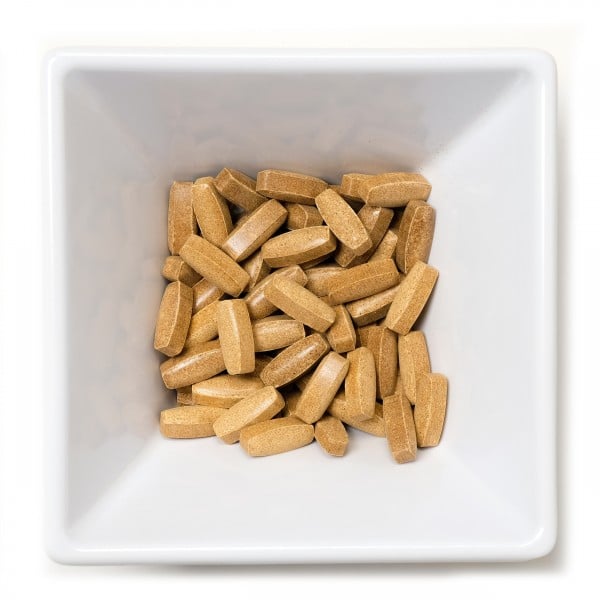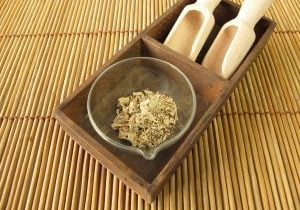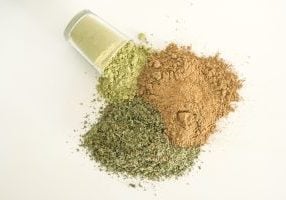Kratom’s Beginnings
Mitragyna speciosa is the Latin name for what we know and love as kratom. Native to the Southeast Asian countries of Myanmar, Malaysia, Indonesia, Papua New Guinea and Thailand, the kratom tree has stood for thousands of years and is a genus of Rubiaceae, the same family as coffee.
The first documented use of the leaves from Europeans go back to the 19th century. In their native lands, laborers would chew on fresh leaves before or during their work day or brew the dried leaves as tea. At events, hosts would offer kratom to their guests as a hospitable gesture.
In 1831, Dutch botanist Pieter Korthals traveled to Indonesia, which was then called The Dutch East Indies, and became the first outsider to document observations of kratom. Korthals gave the name Mitragyna speciosa in 1839, and after revisions throughout the next two decades, the name was finalized and classified by George Haviland in 1859.
Appearance
The kratom tree is, on average, around 50 ft. tall but can reach over 80 ft. in the right conditions. The leaves and bark mimic that of most other tropical climate trees: smooth, flat bark, large and waxy or glossy leaves pointed at the tip, and a diverse branch pattern to optimize sun exposure.
Kratom leaves are various shades of green, with 12-17 pairs of veins which colors change depending on how much time the leaves had to mature before harvest.
The appearance of the plant will differ based on where it’s growing. Hotter and wetter climates that are pretty consistent throughout the year, like Thailand, tend to help M. speciosa grow large and in charge; competing for sunlight with other tropical trees in dense forests.
In Indonesia, the massive archipelago that contains somewhere between 17.5 thousand to 18.3 thousand islands, has many differences in humidity throughout the year which also affects kratom growth and the season(s) the trees peak in.
It’s been studied (and pretty observable, I think) that weather patterns affect the way a plant grows and adapts to the changes. Every variable in a specific environment can transform the plant’s phyto-chemical composition, and this includes the alkaloids found in kratom. That’s why we can buy different regional strains from our vendors, like Bali and Borneo, because it’s where that strain of tree originated from.
Now, that doesn’t mean that strain is always grown there. Several strains are native to countries that currently have a ban on kratom, so the seeds are germinated and cared for in other countries with focus on keeping the plant in a similar habitat as its origin.
Most kratom strains produce smooth or round-edged leaves, but there is a black sheep in the family. Horned kratom, which you may have seen labeled on a product, indicates that the leaf had sharply pointed edges during harvest. I’m not exceptionally familiar with this type of kratom, so I’ll say with my knowledge, I’ve heard that it is both a natural occurrence and can happen if cross-breeding strains.
The Alkaloids
Kratom contains many alkaloids, but the two leading the pack are mitragynine and 7-hydroxymitragynine. Not a ton of research has been performed on these compounds, but I believe the most accurate data can be found within Dr. Jack Henningfield’s research.
To quickly summarize, these two chemicals are found only in this combination in kratom leaves. Mitragynine, whose chemical structure is similar to yohimbe’s with different pharmacology, is an indole-based partial μ-opioid receptor (also read as mu-opioid, pronounced mew) agonist just like its more potent sibling, 7-hydroxymitragynine.
Legal Status
Kratom had a pretty lax life up until the mid 20th century. In 1943, Thailand’s government passed the Kratom Act 2486, which made planting the tree illegal effective August 3rd of that same year. Leading up to this decision, kratom had gained popularity among those attempting to leave the opium market. The Thai government, in trying to gain authority over the expensive market, passed the Kratom Act and put M. speciosa in the Category 5 substances list where marijuana is found as well.
In December of 2018, though, Thai officials reconsidered their scheduling of kratom and marijuana, opening the doors to legal kratom cultivation in that country. This is thanks to attention and campaigns by kratom activists and scientists alike.
Two other countries in kratom’s indigenous regions experiencing a kratom ban are Myanmar and Malaysia. Under Section 30 (3) Poisons Act, kratom was made illegal in Malaysia in in 1952. Interestingly enough, the Poisons Act isn’t as harsh in terms penalty as the Dangerous Drugs Act, which some parties ask the Malaysian government to place the botanical.
There are several states and cities in the U.S. that have banned kratom altogether, as well as several country-wide bans speckled around the world. With this in mind, kratom is still widely available in the West, and as government agencies propose a kratom ban, we see grassroots efforts, advocates, and lobbyists working hard to make/keep enthusiasts free from punishment.
Advocacy
This is always an important topic for those who want to keep enjoying kratom. For some, it may seem like too much work or useless, but history has taught us otherwise and we must keep pushing.
The Food and Drug Administration (FDA) enacted a “shadow ban” on kratom imports in 2015, still active today, which makes it tricky for vendors to know where all of their product is coming from. That’s where current Good Manufacturing Practices (GMP or cGMP) compliance comes in.
Probably the most important step in showing the FDA and the Drug Enforcement Administration (DEA) that this industry is important to us is by manufacturers and distributors following GMP standards. The American Kratom Association (AKA) and Kratom Trade Association (KTA) both released a version of the GMP guidelines with a focus on kratom. Urging your vendors to follow these compliance standards will help a tremendous amount in keeping the industry alive.
In 2016, there was an attempted emergency Schedule 1 by the DEA for kratom. Thankfully it failed due to an outburst of complaints from advocates, scientists and even Congress members as well. Contacting your state representatives plays a much bigger part than you might think, and you can find them here.
Closing
There’s so much to learn about this amazing plant, and I encourage any and all of your research. These are the basics to get you started in understanding what kratom is and some news surrounding it, so be sure to check up on the ever-changing laws and regulations, which of course, I’ll always be posting here as I receive them.











